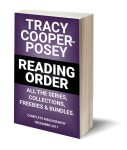
During 2017, a discussion via my newsletter and email from various readers alerted me to the confusion over book lengths and what makes a book a book, or a novel a novel.
Novels and books are not interchangeable terms, anymore, although they used to be.
A “novel” is a preset wordcount range that defines a story length – a novel. Novels are one length of story; there are others.
A “book” was once purely a physical volume that you could hold in your hands. Books could contain a single novel, a collection of novels, (an omnibus), a collection of short stories by different authors (an anthology), a collection of short stories by a single author (a collection), a collection of poems (usually called a volume or sometimes, a chapbook).
The number of pages in a print book was limited by printing processes. The minimum number of pages was quite high—in the hundreds of pages at least. Therefore, anything shorter than a novel was never printed on its own in a standalone book. This is why “book” and “novel” became synonymous.
Then eBooks came along and blasted that concept out of the water.
 Nowadays, a “book” has become nearly meaningless as a definition, because stories of any length can be published on their own. Print On Demand processes have improved to the point where a book of only 45 pages can be printed as its own volume, which puts longer short stories into the “book” range. (On the left is a sample of one — they’re cute!)
Nowadays, a “book” has become nearly meaningless as a definition, because stories of any length can be published on their own. Print On Demand processes have improved to the point where a book of only 45 pages can be printed as its own volume, which puts longer short stories into the “book” range. (On the left is a sample of one — they’re cute!)
It is easier to think of stories and categorize them purely by length.
The official length divisions as given by Wikipedia, the Science Fiction Writers of America and the Romance Writers of America are:
Short story: under 7,500 words
Novelette: 7,500 to 17,499 words
Novella: 17,500 to 39,999 words
Novel: 40,000 words or over.
Novelettes, which fell out of the traditional publishers’ favor when pulp magazines died, are coming back into play now that indie publishing allows a story to be told in the length it needs to be.
Novels, in the pulp fiction era, all hovered around the 40-50K mark. Then printing became expensive and publishers raised word counts higher and higher each year, to justify the hefty prices they were forced to charge. A 100,000 word book was rare in the mid-20th century, became the norm at the end of the century, and now, with eBooks and indie publishing, novels are returning once more to the tighter, shorter lengths of the range.
For that reason, I put a cap on “novel” length and add an additional length to the definitions:
Novel: 40,000 to 99,999 words
Plus-sized novel: 100,000 words or over.
So the full range of story sizes becomes:
Short story: under 7,500 words
Novelette: 7,500 to 17,499 words
Novella: 17,500 to 39,999 words
Novel: 40,000 to 99,999 words
Plus-sized novel: 100,000 words or over.

 A modified version of this post first appeared in Reading Order 2017, which was released just this week. It’s a free resource for readers. Check it out here.
A modified version of this post first appeared in Reading Order 2017, which was released just this week. It’s a free resource for readers. Check it out here.